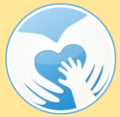The secret to setting good boundaries and raising a less-frustrated, happier baby
Raising articulate, communicative children begins from day one. But how do we bond as parents even start to encourage this? It’s so easy to repeat “no. No! No!” to your little one at home… But it might be just as easy to switch gears and take this as an opportunity to teach communication skills instead. SignShine owner and pediatric communication specialist, Etel Leit, says the secret to setting good boundaries and raising a less-frustrated, happier baby is simple: create a ‘yes’ environment!
Raising articulate, communicative children begins from day one. Developing baby communication skills and setting good boundaries can result in a less-frustrated, happier baby. We talked with Etel Leit, a baby communications specialist, about teaching our babies language from day one, saying “no” and the types of no, toy recommendations and much more.
Communication vs. Speech
Many parents want to know how to enhance communication skills with their children but this starts with being able to distinguish between communication and speech. While you may think they are synonymous and that you won’t be able to communicate with your child if they are not yet verbal, the truth is: You have been communicating with them from the moment you first held them.
This distinction between verbal and non-verbal communication makes all the difference in the world when you consider the awareness of non-verbal modalities that you and your baby are using from day one. “Non-verbal modalities” may sound like a daunting term, but in reality, this is the part of communication that we do without even thinking!
A Few Forms of Non-verbal Modalities:
- Posture
- Facial Expressions
- Tone of Voice
- Gestures and Baby Sign Language
In Daddy Squared’s recent podcast, Leit discusses how little changes in the way you communicate with your pre-verbal child can make a huge difference by the time they are verbal! She also details the various ways parents can say “no” without discouraging curiosity.

Creating a YES environment
Kids are naturally curious, and “If you provide something that makes them curious, don’t be surprised when they are”, says Etel Leit. In a child’s first few years of development, it is important to stimulate their minds. If you are constantly saying “no” to them, they won’t feel comfortable exploring the world around them. Instead of saying “no”, you can compromise by providing an alternative. An example of this is when a child throws something hard. Rather than reprimanding them, you can say “We don’t throw those… but we can throw balls.” In addition, you can take that object out of the area so the child knows that what is in his or her area, is safe to touch and play with. This is called creating a ‘yes’ environment.
However, there are times where no is no. Leit calls this the “dangerous no.” This could come up when a child is trying to touch an oven or run into the streets. For those times where an alternative won’t do, invent a sound that is almost like an alarm – quick, sharp, can’t miss it! When you make this noise, your child will stop in their tracks, and the key after is that you are silent. The silence makes that noise more powerful.
2 Types of No’s:
- “No” for when we don’t do it – give an immediate alternative or take the object out of view
- The dangerous “no” – invent an alarm sound and get silent after
Listen for more!
This blog just covers the tip of the iceberg for all the effective parenting tips Leit shared in the latest podcast. If you are curious about how to teach your baby sign language, first signs with your baby, toy recommendations, and more, give the podcast a listen or feel free to send Etel a shiny message!



